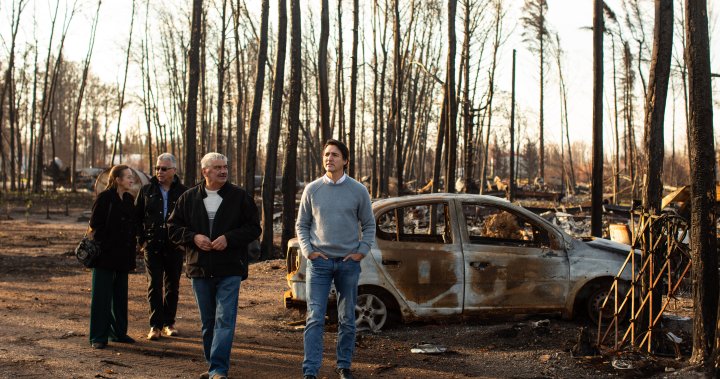
After a year of disasters, where should Ottawa’s climate policy go in 2024?
Global News
According to data from Natural Resources Canada, the country saw a total of 6,174 fires as of Sept. 6. A total of 232,209 people were forced from their homes.
Even before the month of July had ended, it was already on track to be the hottest month ever recorded.
A concerned United Nations Secretary-General Antonio Guterres said the era of global warming was at an end. He said the world is now in an era of “global boiling.”
Guterres said the world was seeing “children swept away by monsoon rains, families running from the flames (and) workers collapsing in scorching heat,” and 2023 saw such climate disasters across the globe.
In July, heavy rains and flooding killed people in Japan, India, China and the United States. July 3 was the hottest day on record. That same month, the air in several major Canadian cities smelled like burning campfires. Air quality plummeted that month around the world because of wildfire smoke, made worse by the adverse effects of climate change in an “unprecedented” fire season.
According to data from Natural Resources Canada, the country saw a total of 6,174 fires as of Sept. 6, with 284 evacuation orders issued this year and 232,209 people forced from their homes.
Four provinces and one territory saw records set in terms of area burnt in wildfires, with 5.3 million hectares in Quebec, 3.6 million hectares in the Northwest Territories, 2.3 million hectares in Alberta, 1.9 million hectares in B.C. and 25,000 hectares in Nova Scotia.
The wildfires have also made greenhouse gas emissions worse, with an estimated 1.7 billion tonnes of CO2 emitted by September. Prime Minister Justin Trudeau called the devastation “apocalyptic.”
“That’s (what) just over one degree of warming looks like. And it really makes clear that the costs of inaction,” Julia Levin, associate director of the National Climate Program at Environmental Defence Canada, told Global News.











